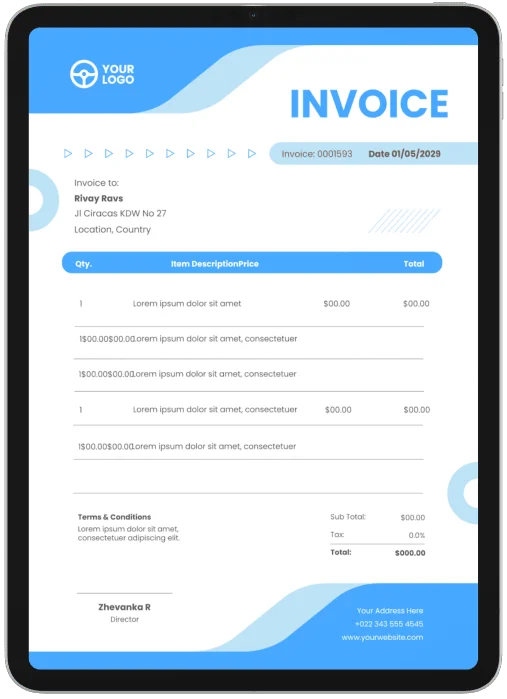Free Word Invoice Templates
Our Downloadable Word Invoice Templates Offer a User-friendly and Professional Solution for Creating Invoices with Ease.
TRY IT FREE

Downloadable Free Word Invoice Templates
Choose from a diverse range of templates that match your business style and preferences. Once you've selected the template that suits your needs, simply download it, customize it with your client's information, details of the goods or services provided and pricing. These templates are designed to help you quickly generate polished and well-structured invoices that leave good impression on your clients. With our downloadable Word invoice templates, you can streamline your invoicing process, ensuring professionalism and efficiency in your business communications.
Create Your First Invoice Like a Pro – Fast, Free and Effortless!
Get Started Now →
Highlights of Word Invoice Templates
FAQs

Yes, indeed! Our selection of invoice templates is entirely free for use. You can
download, adapt, and generate invoices without any hidden fees or additional
costs.
Certainly! Our Word invoice templates are specifically designed for easy
customization. Incorporate your own logo, select brand-specific colors, and add
personalized touches to ensure your invoices reflect your brand's identity.
Indeed, they are! We offer a wide variety of templates that are suitable for
multiple industries. Whether your business specializes in consulting, retail, or
another sector, there's a high likelihood of finding a template that meets your
specific business requirements.
Yes, they are equipped with this capability. Our templates come with pre-set
formulas for automatic calculation of subtotals and taxes. Just input your
specific figures, and the template will handle the calculations for you.
Yes, they can. Our Word invoice templates are versatile and suitable for use in
both digital formats (like email) and for traditional printed invoicing.
Downloading is a breeze. Simply select the template you like, and it will open in
a format of your choice (for instance, Word or PDF). From there, you can download
it directly to your device.
No, our Word invoice templates are free of watermarks, ensuring that your invoices
maintain a professional and clean appearance.
Yes, absolutely. Our website is designed to be mobile-friendly, allowing for
convenient access and download of templates from your smartphone or tablet.
We regularly update our template collection to ensure they stay current and
relevant. We frequently review and update our offerings to provide you with the
latest in design and functionality.
Yes, they are. Our Word invoice templates are flexible and can be used for a range
of invoicing needs, whether for business, freelance work, or personal projects.
What Our Customers Say About Using Zintego
Build a Custom Invoice
Create the perfect Word invoice for your business with our Online Invoice Generator.
TRY IT →









